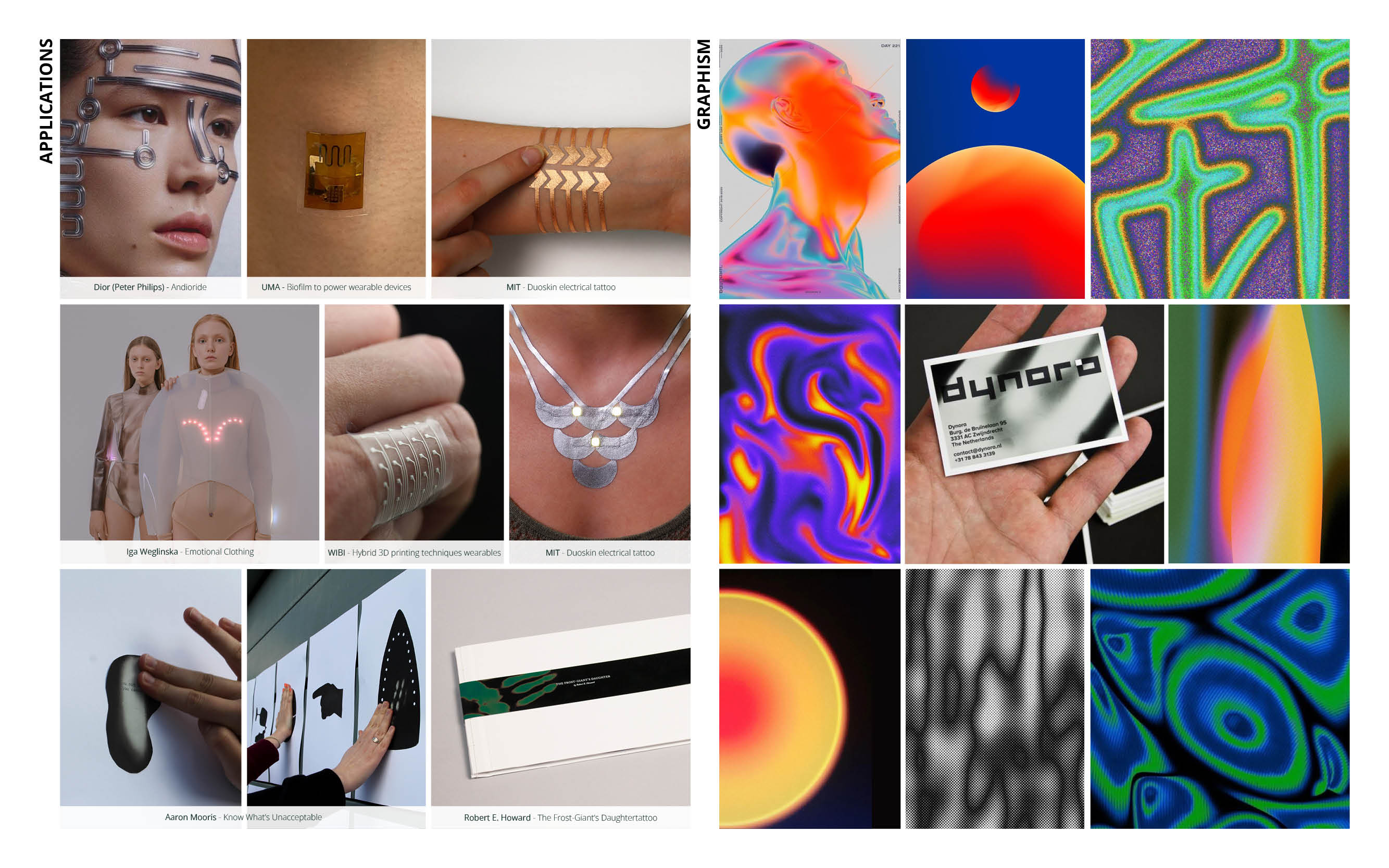12. Skin Electronics¶
Research¶

During week 12, we learned on Skins Electronics. To start the week, we had a lecture by Katia Vega.
Following the speach of Katia, I wondered what skin means for me. I thought it is like a general armour, and the first interface with sensations such as hot or cold. I am less interested in the notion of a graphical tattoo than in the perception of temperature changes for now. So I looked for references on the theme of temperature maps, halos and gradient effects.
And thought it would be a good opportunity to try out some thermochromic inks in silkscreen-printing on this week.
Tip
I bought some thermochromic inks samples on this website for my 1st trials : SFXC. After the Week 12 and for explorations on my final project, I have also contacted Sico Inks in Belgium and Matsui Colors in Japan. These are good references when you need large quantities and specific variations. SFXC is good for having several samples in a short time frame.

- I am also interested in these inks in an idea of beer packaging linked to my final project, as we usually wait for a certain cold temperature before drinking it. I will test it later with my screen-printed kraft labels.

Steps¶
I am practising sikscreen printing since 4 years on evening sessions in Brussels, and used this workshop for my weekly exploration.

-
1st we print our pattern in 100% on tracing paper,
-
Then we expose the screen prepared with emulsion to UV lights and reveal this pattern wich is becoming a stencil
-
Then we put ink on the screen and we press the screen with a squeege, to apply ink homogeneously on our support, wich is under the screen
Silkscreen printing is by definition made for flat surfaces. I decided to test it on semi-transparent textiles and not directly on my skin, at least for 1st trials. In an idea of creating thermochromic clothes later to connect with the skin. But I also bought a sample of thermochromic pigment on the same SFXC website to test a solution with an adhesive masking on skin.
I had samples of three thermochromic inks dedicated to silkscreen printing, and they had 3 different temperatures of opacity transition :
- Blue ink is becoming visible and more intense under 15°C
- Black ink is visible at an ambient temperature and starts to disappear at 27°C
- Red ink is visible at an ambient temperature and starts to disappear at 47°C
It seems quite interesting to play with these different activation temperatures to create superposition and gradient effects, inspired by temperature maps. I have started my printing process with the 2 "extreme" tints/temperatures (blue & red) separately, and then combine it to do some temperature tests.
Here is an overview of the silkscreen printing preparation in pictures.






I used a screen fabric of 77T (77 yarns by centimeters), good for printing on textile. For paper, we mainly use a 90T. Thinner frames are existing too (120 for example to print on glass) to apply thinner layers/print thinner patterns.
As a 1st impression, I found the SFXC products little bit to liquid to print, and would prefer to develop a process with more paste-like products in the future, like what Sico Inks seems offering.
Some experimentations with temperature :





Video¶
From Vimeo¶
x
x
x
x
x
x
Next steps¶
To develop these temperature maps on skin, I can imagine combining these researchs with the applications I was looking for during Week 08, on Wearables. I was interested in the body zones linked to stress, and I was more interested in breathing-related symptoms. Temperature changes also seem interesting to explore in the same way and in the same body zones.

-
This tutorial from Instructables seems great to be combined with a black or red ink print, turning transparent respectively at 27°C and 47°C. It could be great in an idea of printed headband, to measure the body temperature.
-
If I imagine to apply the silk-screen printing on a transparent textile and to controle the displayed pattern & a LED by switching the temperature, this tutorial seems interesting.
